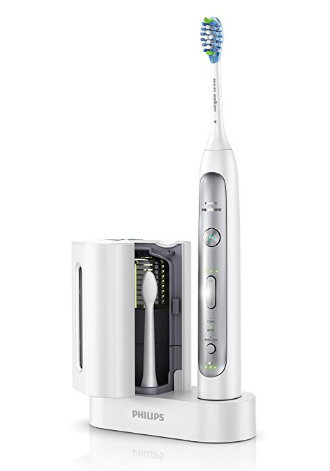Ordinary vs. Electric Toothbrush: Which Is Best For You?
It is important to brush your teeth in order to maintain good oral hygiene and prevent plaque and numerous diseases that affect not only your mouth but the rest of your body as well.
The American Dental Association (ADA) says that both manual and electric brushes are effective in their own right when it comes to removing plaque that results in tooth decay and disease. Whether manual or electric, ADA gives its Seal of Acceptance to any brush that is both safe and effective.
Let’s have a closer look at the pros and cons in this manual vs. electric toothbrush comparison and see which best appeals to you.
Contents
Electric Toothbrush Pros
More Effective Plaque Removal
Several studies, in general, have confirmed that electric toothbrushes are more effective at removing plaque buildup from your teeth as well as gingivitis than ordinary toothbrushes. One study shows that after three months of use, electric toothbrushes led to a 21% reduction in plaque and an 11% reduction in gingivitis.
Produces Less Waste
Unlike manual toothbrushes where the whole product needs to be thrown away, it is only the brush head of the electric counterpart that needs replacing. This is a less wasteful alternative compared to 1000 tons of plastic toothbrushes that are discarded every year.
Simpler For People With Little Mobility
Electric toothbrushes are more convenient for people with less mobility such as:
- Arthritis
- Carpal tunnel
- Developmental disabilities
Improve Oral Health Of People With Orthodontics
According to one study, electric toothbrushes have proven to be very helpful for people with orthodontics such as braces as it makes brushing easier for them.
Built-in Timers
Built-in timers are convenient as they provide the dentist recommended time to brush our teeth for removing plaque from our teeth and gums.
Safe For Gums
Electric toothbrushes not only prevent your gums from getting hurt but also promote good oral health overall.
Electric Toothbrush Cons
More Expensive
Electric toothbrushes are more expensive than ordinary toothbrushes as it costs between $15 to $250 per brush. Even the new replacement brush heads come in packs of multiples and can cost around $10 to $45.
Not Easy Finding Replacement Brush Heads
It’s not easy or convenient to find replacement brush heads since not all stores carry them. Your local stores might not even have the brand that you’re looking for. Of course, you can always buy them online but it’s not always convenient for everyone, especially if you need one right away. You can, however, stock up on enough brush heads to last you a year or two but that would add up to upfront cost.
Not As Effective In Removing Plaque
Two studies performed on seniors found that electric toothbrushes aren’t that effective in removing plaque than manual toothbrushes. This does not mean that electric toothbrushes don’t work, but it could also mean that they aren’t worth the extra cost.
Plug-in Versions Not Convenient
If you’re traveling overseas, then plug-in electric brushes aren’t a good option since you will need a backup toothbrush in these cases.
Not As Eco-Friendly As You Think
Although electric toothbrushes produce less waste, they still require batteries or electricity, making them less eco-friendlier than their manual counterparts.
Manual Toothbrush Benefits
Manual toothbrushes, though lacking in the bells and whistles of electric toothbrushes, are still effective in cleaning our teeth and preventing gingivitis. Switching from a plastic to a Ecoy toothbrushes is a small change with a big impact on lowering your carbon footprint.
Here are some of the benefits that manual brushes provide us with:
Affordable
According to Dental Dorks manual toothbrushes are generally cost-effective in which one can cost you around $1 to $3.
Accessible
Ordinary toothbrushes are easily available at almost any grocery store, dollar store, gas station or pharmacy. And since they don’t need to be charged, you can take them anywhere with you around the world.
Manual Toothbrush Cons
Your Gums Can Get Hurt
Some people brush their teeth too hard with manual toothbrushes, which can harm the enamel of your teeth as well as your gums. This has been proven with one such study.
Unaware Of The Brush Time
It is hard to tell how long you are brushing every section of your teeth since there is no built-in timer. You can make use of a kitchen timer to time your brushing sessions.
How to Brush Your Teeth
Be it manual or electric, the most important aspects of brushing your teeth are brushing your teeth twice daily and using a proper technique. The best way to brush your teeth are doing any of the following:
- Don’t use brushes with hard bristles as they can irritate your gums. That’s why the ADA recommends you use soft-bristle brushes. Toothbrushes with angled or multi-level bristles are also good options.
- Choose a toothbrush that is the right size as your mouth.
- Ensure that you hold your toothbrush at a 45-degree angle to your teeth and gums.
- Use a fluoride toothpaste.
- After rinsing and washing your toothbrush, keep it upright to air dry and keep it out of the range of your toilet as the flushing can spray germs.
- For two minutes, gently brush all tooth surfaces (front, back, chewing).
- Keep mouth rinsing in mind, but don’t take it as a substitute for brushing or flossing.
- Be sure to floss once a day, either after or before brushing.




